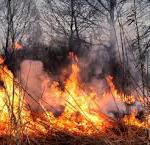Avoid Starting Grass Fires in the Cariboo
It doesn’t take much for a grass fire to develop into a wildfire, and unfortunately, no matter how many times we are educated about grass fire prevention, every summer season, too many seem to appear. While many grass fires are ignited by obvious, careless human efforts, like burning garbage or abandoning a smoldering camp fire, they can start surprisingly easily and often without our knowledge. These may be things like a lawnmower blade striking a rock, a vehicle’s exhaust pipe dragging across a grassy area on a dirt road, or an electric fence wire snapping against a metal post. And as we all know, it doesn’t take much of a breeze to fuel a grass-kindled flame that covers just a few yards to grow into an inferno spanning several acres. Time is crucial when trying to prevent a small, grass fire from turning into a destructive blaze, so we need to plan ahead as much as possible on situations that we can control.
A very prudent idea to reduce the chance of a grass fire transpiring within your property’s confines is to cut and trim tall, dry grass. Some of these common, potentially dangerous areas are along driveways and roadsides. Be especially cognizant of places where vehicles are likely to stop or idle, like around mailboxes, gates and turn-outs. Check the grass around any outdoor buildings, i.e. barns, sheds and workshops. These are likely areas for the emergence of accidental fires that might be the cause of malfunctioning equipment, smokers, or even children playing with fireworks. So what should you do to prepare for the worst? Planning ahead is vital so you know what to do if a fire starts. Keep basic fire-fighting equipment close at hand; a fire extinguisher in all your vehicles and buildings; keep a shovel or two in handy-to-get places around your property; above all, have a way to call for help, such as a cell phone or a citizen’s band radio. Be certain you know your escape routes and frequently check them, to ensure they are passable.
In the final analysis, the best way to battle a grass fire is to prevent it from ever starting. Perhaps these tips will help you stay alert to these dreadful, recurring calamities.
• Obviously, don’t throw cigarette or cigar butts on the ground or out of a vehicle.
• Don’t burn trash, leaves, or brush outdoors, without proper supervision.
• Employ the 30-foot “safety zone” surrounding the home. Clear away loose grass, leaves, etc. away from the home, especially those living in a woodland area.
• If not using a storage shed to store your firewood, make sure you stack it at least 20-feet away from your house.
• Rake leaves, cut off dead limbs, and cut grass regularly. Remove dead branches that extend over the roof.
• Avoid parking cars, trucks or recreational vehicles on dry grass or brush. Exhaust systems on vehicles can reach a temperature of more than 1,000 degrees; it only takes about 500 degrees to start a brush fire in the summer.
• Maintain a 10-foot area that is free of brush and shrubbery around BBQ grills and propane tanks. Do not leave a grill unattended, and when finished, place ashes in a bucket and soak in water until completely cooled. Keep a shovel, bucket of water, fire extinguisher, or other fire suppression tools on hand in case of emergency.
• Stress to children the importance of not playing with fire–especially in grassy areas, fire can spread quickly and children need to be informed of the potential threat.
Now that summer looms, we are anxious to get out and enjoy the great outdoors. We break out the tents and grills and make plans for camping or anything we can do now that we’ve thawed out. Make sure you are prepared and educated on what to do should you encounter a fire, in your journeys, and have a happy, healthy, couple of Minnesota summer months.



